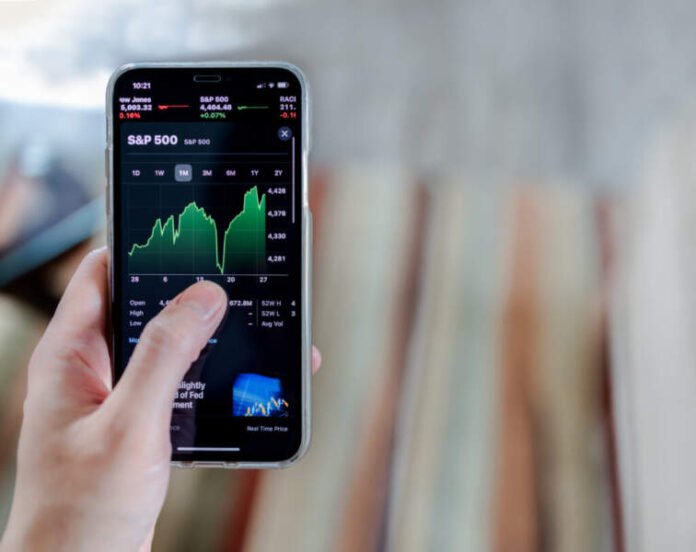People can participate in foreign exchange and other financial markets through online Forex trading platforms and Contracts for Difference (CFDs). These platforms offer access to a range of financial products and enable convenient, real-time trading from any location with an internet connection. In Trading Contracts for Difference (CFD), traders can speculate on the price movements of financial markets, including indices. An index represents a basket of underlying assets, such as stocks, that are used to track the performance of a specific market or sector. By trading indices CFDs, traders can take advantage of the fluctuations in the value of the underlying assets without actually owning them. They are used as a tool for investment and to diversify portfolios and have become increasingly popular in recent years, especially with the advent of online trading platforms.
This beginner’s guide will explore what Indices CFDs are, how they work, and how to start trading them on an online exchange platform.
What are Indices CFDs?
An index is a collection of stocks representing a particular market or sector. For example, the S&P 500 Index is a collection of 500 large-cap stocks listed on the American stock exchanges and is considered a good indicator of the health of the US stock market.
They are a type of derivative product that allows traders to speculate on the price movements of an index. They are similar to stock CFDs, but instead of trading individual stocks, traders trade on the price movements of an entire index.
How do Indices CFDs work?
When trading in them, traders speculate on the price movements of an underlying index, either by buying (going long) or selling (going short). Suppose a trader believes that the price of an index will rise, they can buy Indices CFDs, and if they think that the price will fall, they can sell Indices CFDs.
The profit or loss from trading in them is determined by the difference between the price at which the trade was entered and the price at which it was closed. If the price of the index rises, the trader will make a profit; if it falls, they will incur a loss.
It’s important to note that when trading in them, the trader never owns the underlying index and is simply speculating on its price movements.
Advantages of Trading Indices CFDs
There are several advantages, including:
- Access to a broader range of markets: They allow traders to access a wide range of markets and sectors, including stock markets, commodity markets, and currency markets.
- Leverage: They are traded on margin, meaning traders can control significant positions with relatively small investments. This allows traders to make more profits and increases the risk of losses.
- Short-selling: They allow traders to go short, meaning they can profit from falling prices. This is impossible with traditional stock trading, where traders can only benefit from rising prices.
- Flexibility: They can be traded on an online exchange platform, which allows traders to access the markets from anywhere in the world at any time.
Getting Started with Trading Indices CFDs
Before getting started with them, it’s essential to understand the risks involved and to have a solid understanding of the markets and trading strategies. Below are some steps to help get you started:
- Choose a reputable broker: Choose a regulated broker that offers a wide range of CFDs to trade. Choosing a broker that provides a user-friendly trading platform and good customer support is also essential.
- Learn about the markets: It’s important to understand the markets you are trading in, including the underlying indices and the factors affecting their prices.
- Develop a trading plan: Develop a trading plan that includes your investment goals, risk management strategies, and a clear understanding of your trade entry and exit points. It’s essential to stick to your plan and not let emotions guide your trades.
- Start with a demo account: Many online exchange platforms offer demo accounts that allow you to practice trading CFDs without risking real money. This is a great way to get a feel for the medium and test your trading strategies.
- Gradually increase your investments: As you gain experience and confidence, you can gradually increase your investments. It’s important to remember to continually manage your risk and not invest more than you can afford to lose.
Need For A Trading Platform
A reliable online trading platform is crucial for CFD traders because it provides the necessary infrastructure to execute trades quickly, efficiently, and securely. Below are some reasons why you need a reliable online trading platform for CFDs:
- Speed and Efficiency: A reliable online trading platform will have a fast and efficient trading engine that can execute trades quickly, even during periods of high volatility.
- Access to Market Data: The platform should provide real-time market data, news, and analysis to help traders make informed decisions.
- Security: CFD trading involves handling sensitive financial information, so the platform should have robust security measures in place to protect traders’ funds and personal information.
- User-Friendliness: The platform should be user-friendly and intuitive, allowing traders to easily navigate and execute trades.
- Technical Support: A reliable online trading platform should provide reliable and responsive technical support to help traders with any issues they may encounter while using the platform.
Trading Indices CFDs can be a great way to access a wide range of markets and potentially make profits. However, it’s important to understand the risks involved and solidly understand the markets and trading strategies. Following the steps outlined in this beginner’s guide, you can start trading Indices CFDs on an online exchange platform.
Read Also: CAPLITA: Meet an Award-Winning Broker to Start Your Trading Journey



































































